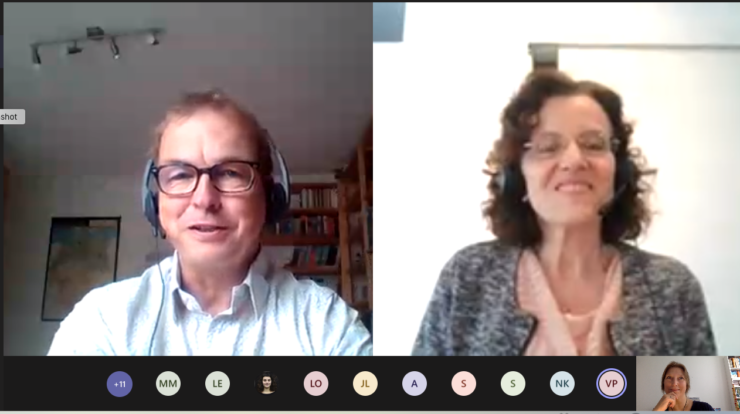P-TRAP is a success story!
We are delighted to announce that P-TRAP is an official success story in the data base of the REA, the Research Executive Agency of the European Commission. But this is the result, lets start from the beginning…
Deliverables and milestones are the common measures to demonstrate the progress of a project. Next to this, a Midterm Meeting is usually held to present the project and its progress at some point to the funding agency. This is an important moment for a consortium, as the meeting aims on the evaluation of the project progress and support the consortium in case improvement is needed. Sometimes it could be associated to a go – no go moment, which would have quite some consequences especially for the ESRs.
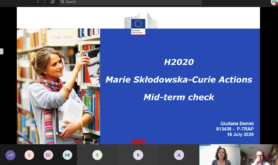
Our 2nd Supervisory Board (SB) Meeting of P-TRAP was associated to such a Progress Review Meeting (according to art. 19.1 of the GA). It assessed the fulfilment of all project aspects as described in the Grant Agreement (science, training, management, networking, ect.), based on the submitted deliverables and reports. Due to the Corona pandemic, all activities were executed via MS Teams, which was a bit laborious but worked without problems.
To prepare ourselves for the meeting with our project officer, the consortium met a few days in advance and all ESRs gave a pre-presentation. So the consortium was up-to-date about the project and the next research activities, and the ESRs got some final feedback to improve their presentations where necessary.
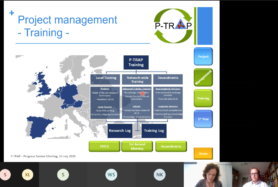
The meeting started with a presentation given by our project officer Giuliana Donini in her function as the representative of the REA. Afterwards Thilo Behrends as the representative of the consortium presented P-TRAP in general and the progress of the project based on the submitted Review Report, deliverables and milestone reports. Each ESR gave a short pitch about her/his individual progress, with the opportunity for directly related questions and joint discussions afterwards. We also presented the just recently published P-TRAP e-learning module produced during the TSTC2 and Lordinas 15s-video explaining her research.
These meetings are not only about the science, they are also about the ESRs themselves. They had a separate meeting with Giuliana, who was interested in the experiences of the ESRs, if they faced problems, how they feel at the host institutions and about their work. To give them the opportunity to speak frank and open, the PIs were not welcome to this meeting.
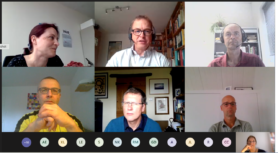
Thus, as there is enough work to do, the PIs met in a parallel meeting to discuss the planning for the next reporting period, including meetings, deliverables/milestones, data management and practical issues such as sharing materials within the consortium.
We are quite proud about our ESRs. All of them were well prepared, the presentations showed a high commitment and that they are familiarised with their topics. They were asked administrative questions to check the eligibility and confirm contract starts, problems experienced e.g. with visa request. Scientific discussions started directly after the ESR pitches, and show clear enthusiasm of the researcher. The ESRs joint the discussion actively and demonstrated that they are already closely collaborating. Also the discussions and planning of the next reporting period were fruitful and straight forward. It has become clear that the consortium is closely collaborating and also started external collaborations.
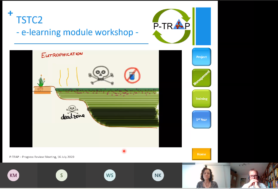 |
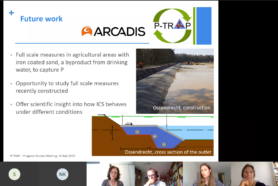 |
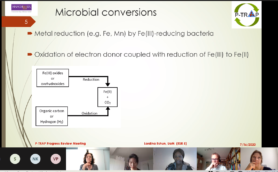 |
 |
Accordingly, the official feedback was very positive, a clear go-moment for the project, and by this we are delighted to announce that P-TRAP is now an official success story in the data base of the REA! This means, that their Communication Team can use P-TRAP for different purposes, like articles managed by Cordis in collaboration with the Commission’s Directorate-General for Research and Innovation (RTD), Horizon Magazine articles, Futuris videos, and many other events and speeches from the policy side.
So we are happy that the topic of our project -phosphorus recycling in the view of the objectives of the EU Water Framework Directive- is visible and that we can create societal impact with our work!
